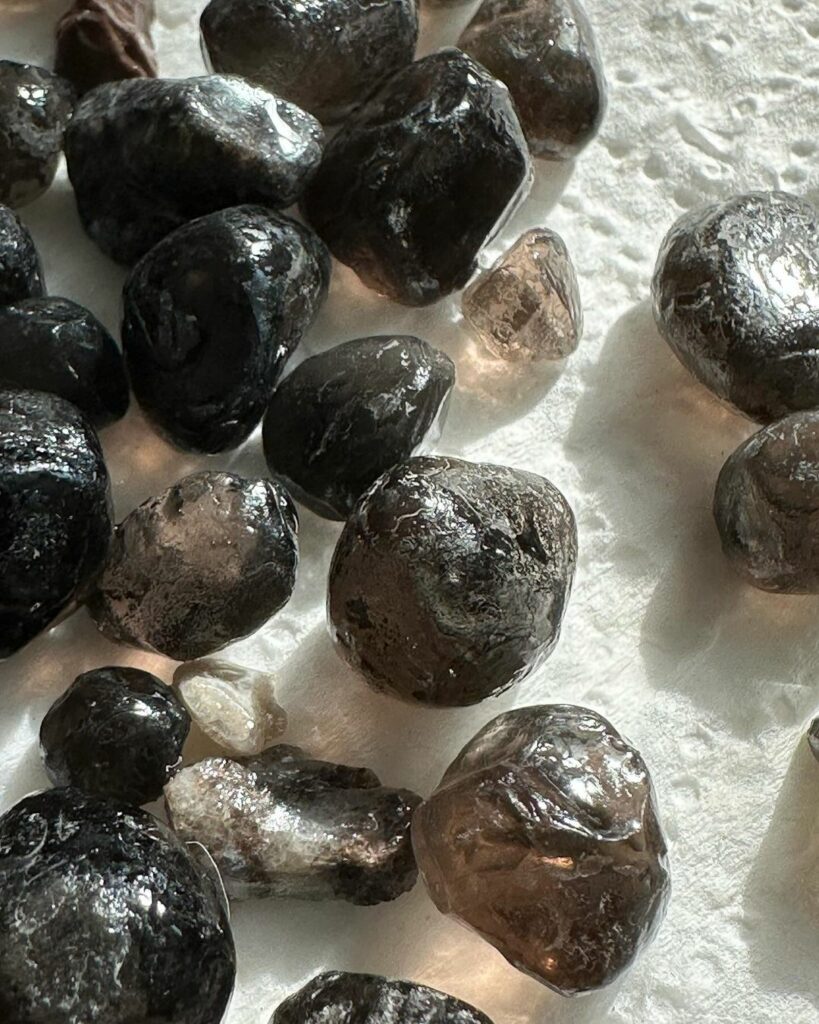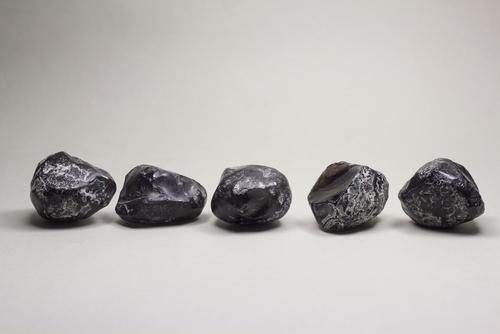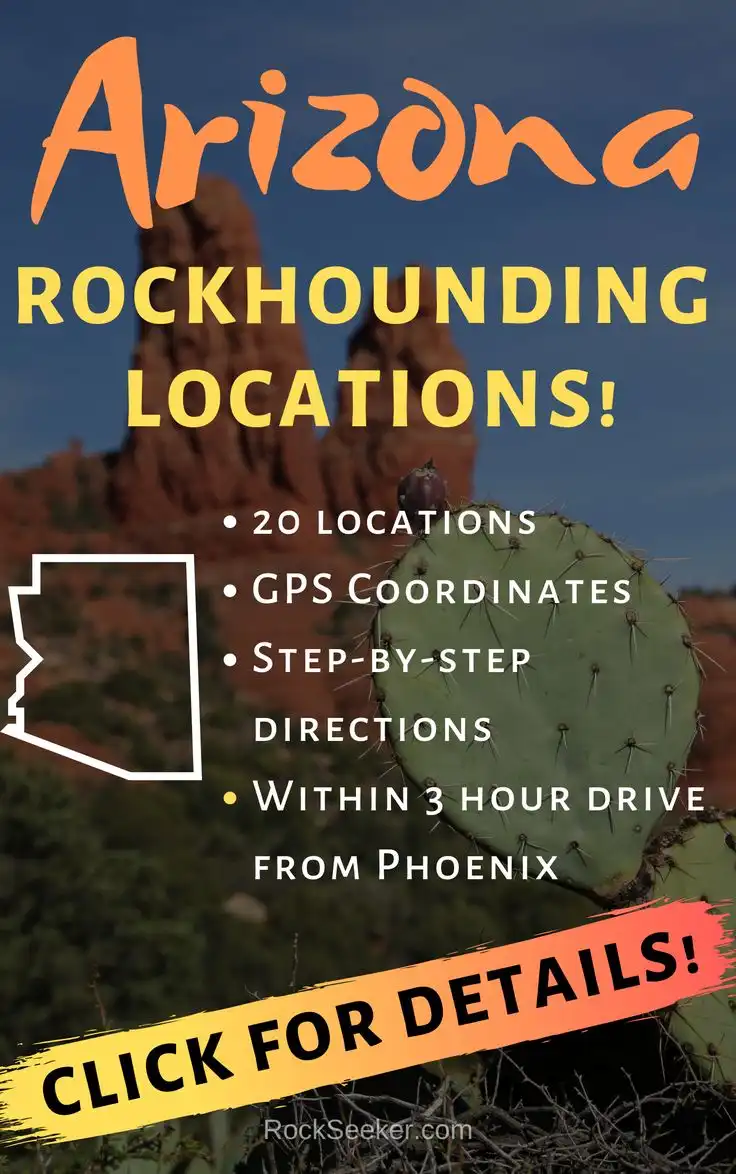What Are Apache Tears?
A unique and popular formation of the glass-like obsidian, known as an Apache Tear, is a popular target amongst rockhounds, new and old alike. In certain areas, they are relatively common, lending themselves well to new hobbyists and even young kids. These formations of obsidian rock are rounded black pebbles that are less than a few inches across. They are a volcanic black glass core, usually surrounded by a rough black outer surface.

As Apache legend has it, there was a standoff between Apache warriors and a hostile outfit of the U.S. Cavalry. Rather than face defeat, the Apache warriors took themselves and their horses leaping over the edge of a cliff to their death below, at a location now known as Apache Leap outside of the town of Superior Arizona. The women and children who grieved the event cried tears of sorrow, which then hardened permanently, into the stones which we now call Apache Tears.
If you ask a geologist, they will probably call it an “obsidian nodule”. Formed when hot lava cooled far too quickly, rendering it into a brittle glass-like state. The round shape, is generally attributed to drop-like conglomerations of hot lava which then cooled rapidly. For example, thinking of a potential formation being from the violent action of the eruption, raining droplets of hot lava into a cold lake.
Where To Find Apache Tears

If you are wanting to get out and find some of these fun obsidian rock formations for yourself, the Southwest United States is the place to go. Here are a few spots in Arizona, New Mexico, and Nevada worth a check out if finding Apache Tears is what you’re after.
Arizona
-Superior, Arizona-
To find the truest of the true “Apache Tears”, you would best go to the spot that earned them their name. In the shadow of the famed “Apache Leap” you can find your own specimens near the site of an old perlite mine, a closely associated formation. Just west of the town of Superior, the Boyce Thompson Arboretum offers visitors great collection of plants and landscapes with scenic hiking trails in the shadow of Picketpost Mountain, both of which are a worthwhile stop in the area. However, if Apache Tears are your end goal, just nearby is a great location.
Not barely more than 1 mile east of the Arboretum, on the way to the town of Superior, a dirt road leaves US Highway 60 to the south. If you continue down this road for about another 1 mile, you should come to a road block near a private land sign. This is near the top of a ridge and near an old perlite mine. From here, descend down into the wash bottoms and chalky perlite hillsides to begin your search for obsidian nodules. A rock pick or shovel may help if you plan on doing any excavating into the hillside.
Nevada
-Scotty’s Junction Rockhounding Area-
Traveling the long open highways of Nevada can get lonely and tiresome at times, try breaking up your long drive with a quick stop to find some Apache Tears in southwest Nevada. Scotty’s Junction is located on Highway 95 about 2 hours northwest of Las Vegas. Just a 30 minute drive north from the town of Beatty, Nevada on Highway 95, Apache Tears are reported to be found scattered across the desert floor on both sides of the highway around this intersection with Highway 267. At Scotty’s Junction, you can also hop on a dirt road that parallels Highway 95 northbound on the east side that then makes a right turn to the east and quickly dead-ends on BLM land. This is a good potential pit stop to find some Apache Tears.
-Fish Lake Valley-
The Fish Lake Valley, at the foot of the Sierra Nevada mountains on the Nevada/California border is said to be a great site to find scattered Apache Tears. East of Boundary Peak, several miles southwest of the Coaldale Junction, the dry Fish Lake Valley is almost entirely on BLM land and open to exploring. Here you can find chalcedony and Apache tears on the soil surface of the dry lake bed.
Also, make it a complete trip with a stop at the nearby hot springs. The Fish Lake Valley Hot Well is located just 7 miles east of Highway 264 on a BLM dirt road, south of the Highway 73 Junction by about 6 miles. The Hot springs here are on the edge of the dry lake bed and a great spot to base your operations out of.
New Mexico
Mule Creek (Roadside Apache Tears)
In the rolling big country of the Arizona/New Mexico border, where remote desert rivers and washes have carved deep into the rocky terrain, lies one of the biggest deposits of obsidian to be found. Near the isolated and tiny town of Mule Creek, New Mexico just a few miles from the Arizona border and the town of Clifton on highway 78, the Gila National Forest offers rockhounders vast public lands to delve into this deposit of obsidian and get their hands on some polished Apache Tears stones.
For a quick and dirty drive-by rockhounding trip, try looking in the several wash bottoms that Highway 78 crosses in and around the town of Mule Creek. A quick roadside stop could likely lend a specimen or two in short order hidden amongst the wash bottom cobble.
Mule Creek (Interior)
For a rock-hounder looking to make more of a trip out of Mule Creek trip, large deposits of obsidian in the polished Apache tear formation are to be found in the vast and remote Gila National Forest public lands. There are a few forest service dirt roads that head north and south from highway 78 and will offer ample camping and exploring opportunity. One of the larger deposits supposedly exists southeast of Mule Creek a few miles. Caution though as these roads often become very rough very fast. Additionally, there are a few private ranches to be careful to not trespass onto. Otherwise, the vastness of the Gila National Forest still holds hidden treasures for explorers. Apache Tear deposits are likely to be held up into the layered rhyolitic volcanic ash deposits. They will usually appear in dense clusters in certain locations along this cliff bands. Try looking in canyons and areas where cliff edges have been cut into rhyolitic deposits. Check out this extensive publication on the local geologic formations of the Mule Creek area. This is an excellent field guide to optimizes you search.
East Grants Ridge
East Grants Ridge lies northeast of Grants, New Mexico, and is accessible throughout the year and a great site for garnets and topaz, additionally Apache Tears can be found amongst some of the rhyolite formations. The collecting area is located within the Cibola National Forest, access via a 5-10 miles drive northeast of Grants along paved Lobo Canyon Road. One spot to try looking is where the road comes close to the cliffs and chunks of rock from the cliff have slid down. Looking through the rubble can be productive. Apache tears that have weathered out of the rhyolite and can be found by sifting the soil. The more ambitious collector may wish to climb East Grants Ridge and try his/her luck looking among outcrops of the rhyolite. If you drive past the road leading to the gypsum mine, you may have passed through most of the prime areas.
Final Thoughts
These are just a few locations in the American Southwest where you can easily find Apache Tears. If none of these locations are within easy driving range for you, then I’m confident that any of your local rock and gem club members would be more than happy to help you out!
If you happen to be in Arizona, or planning on being in Arizona in the near future, and would like a list of rockhounding destinations along with GPS coordinates and step by step directions, then you might be interested in the Arizona Rockhounding Guide I recently put together.
You can get more information about the Arizona Rockhounding Guide here: The Arizona Area Rockhounding Guidebook
You Might Also Like…
- 20 Dig Sites within 1 to 3 hours from Phoenix.
- GPS Coordinates to get you to the exact spot with links to Google Maps.
- Step-By-Step Directions to help you take the right route.
- Off the beaten path destinations with some sites not found in other guide books.
- Bonus Desert Safety checklist included.

- 7 Of The Largest Gold Nuggets Ever Found…Ever! - December 21, 2023
- Find Gold On Your Property? Here’s Why You Should Think Twice Before Spreading the News - December 21, 2023
- The Opalized Crab Claw (And How It Formed) - September 14, 2023
- Online rock and mineral club for collectors of all levels!
- Find community with like-minded rock and mineral enthusiasts.
- Monthly Giveaways!
- Free Access to Entire Digital Library of Products (current and future products)*



